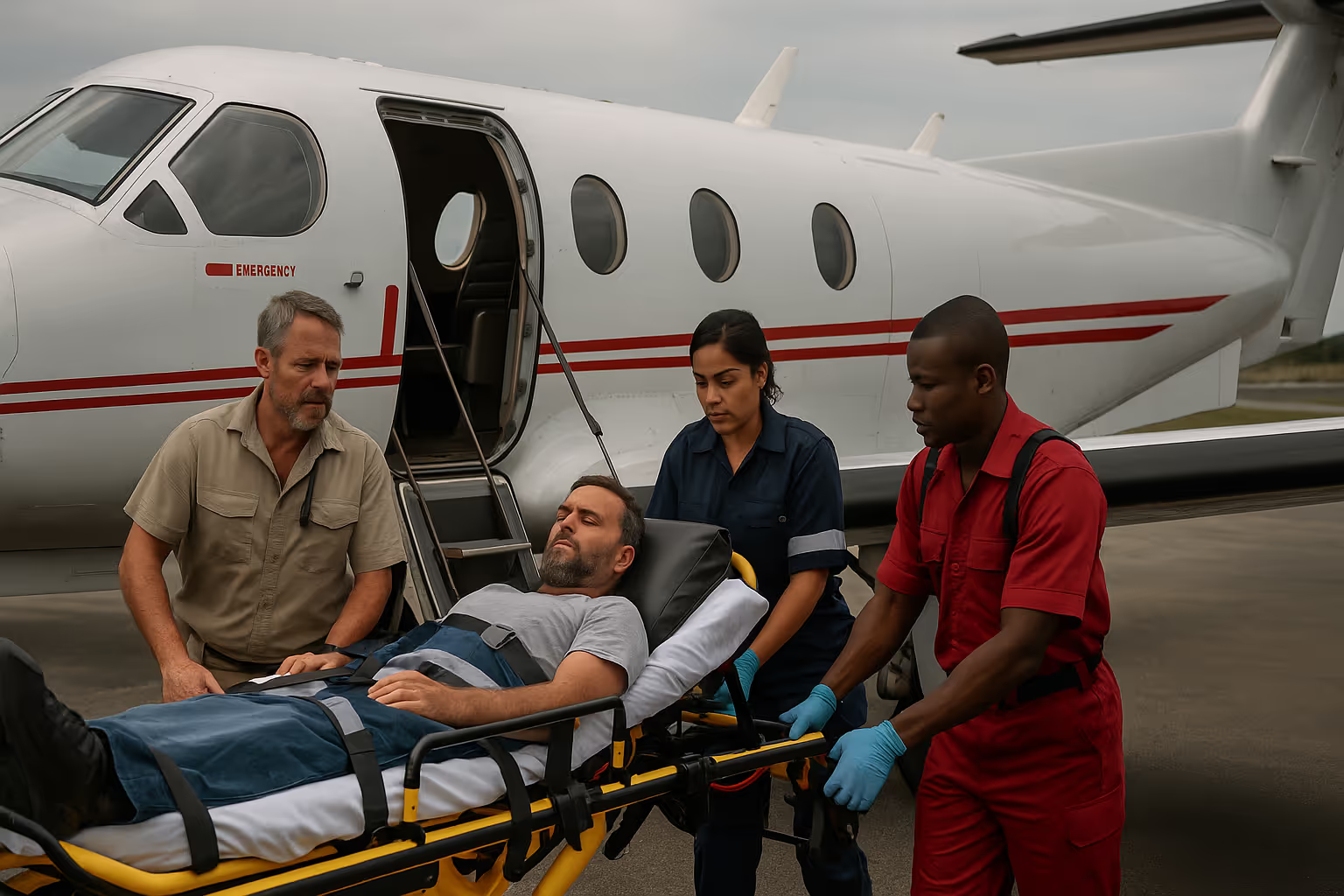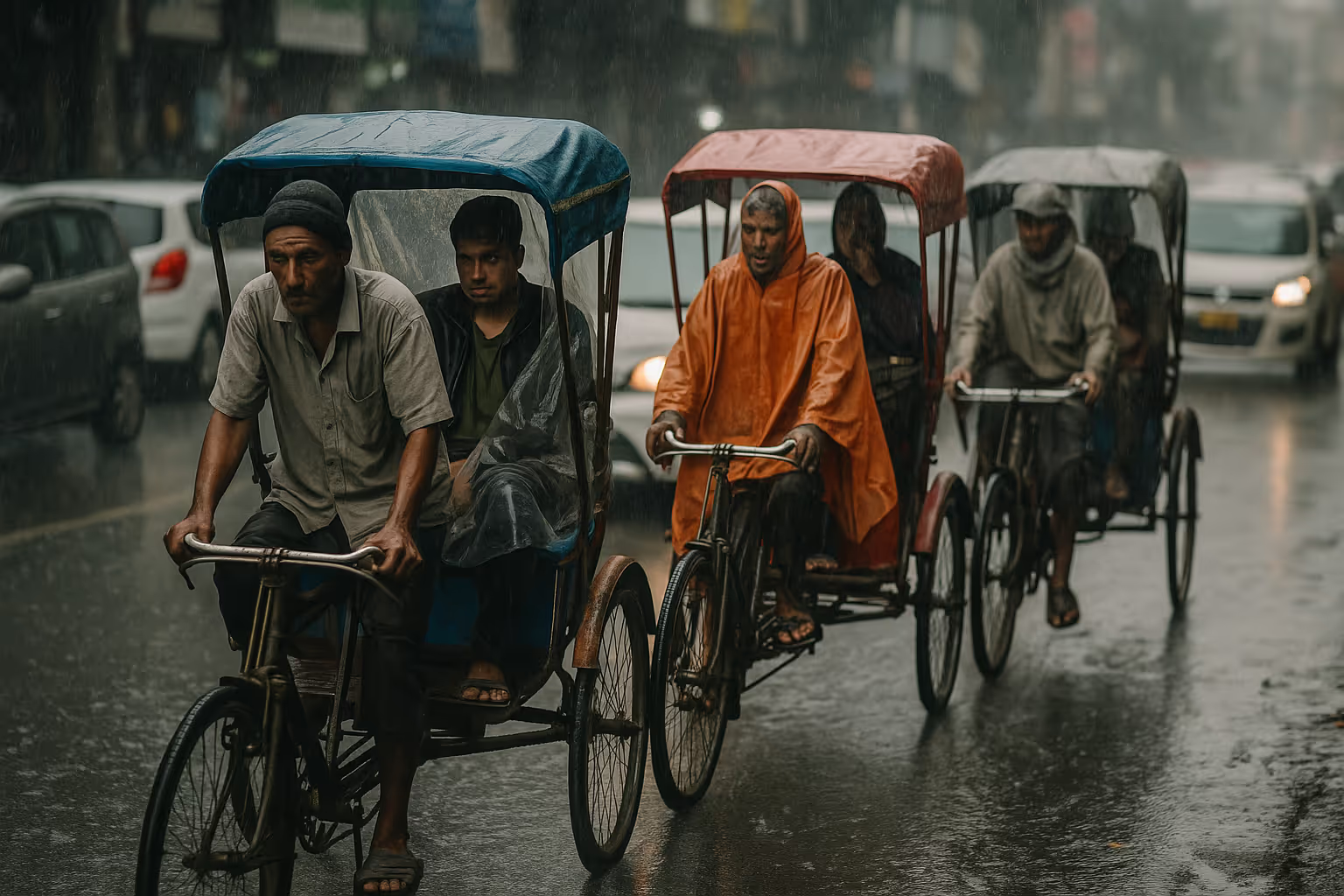What Does Emergency Evacuation Insurance Actually Cover?

If you’re working or travelling abroad — especially in remote or high-risk regions — emergency evacuation insurance might be the most important cover you have. But what exactly does it include?
This blog breaks down what evacuation insurance really covers, how it works in practice, and why standard travel insurance often isn’t enough.
What Is Emergency Evacuation Insurance?
Emergency evacuation insurance is a type of cover that ensures you can be moved quickly and safely to appropriate medical care if you’re injured or fall seriously ill — even in remote or dangerous areas.
It’s not the same as regular travel insurance. It’s designed for:
- Professionals working overseas
- Contractors on short-term assignments
- NGO staff and humanitarian teams
- Travellers visiting higher-risk or low-infrastructure areas
✅ Our policies include evacuation from the point of incident, not just from hospitals.
What’s Actually Included?
Here’s what emergency evacuation insurance typically covers with us:
1. On-the-Ground Medical Evacuation
If you’re injured or seriously ill, cover includes:
- Emergency response to your location
- Stabilisation at the scene
- Transport (by ambulance, boat, or aircraft) to the nearest suitable medical facility
This could be a private clinic, military field hospital, or medevac-ready airstrip.
2. Medical Escort or Flight Nurse
If required, you’ll be accompanied by trained medical staff who manage your condition during transport — especially important for:
- Spinal injuries
- Serious trauma
- Heart complications
- Remote extractions requiring time in the air
3. Repatriation to Your Home Country
Once you’re stabilised and safe to travel, you may be repatriated home for further care. We cover:
- Medical repatriation with a nurse or medic
- Coordination with local authorities and hospitals
- Travel logistics to get you home safely and quickly
This can cost tens of thousands of dollars privately — and isn’t covered by many mainstream insurers.
✅ Our Individual Cover includes both evacuation and repatriation, even in hostile or remote areas.
4. Evacuation from Conflict Zones
If civil unrest, armed conflict or local instability creates danger, your cover may include security-related evacuations when safe and feasible. This applies:
- During active conflict
- When airport access becomes limited
- If road travel becomes unsafe
We work with emergency support providers who operate globally, including in conflict zones.
5. Communication and Coordination
The real value of evacuation cover is having people who know what to do. Our support teams:
- Work 24/7 in all time zones
- Speak to hospitals, embassies, and local authorities
- Handle logistics like ambulances, customs, clearances, and flights
- Coordinate with employers or family members when needed
What About Travel Insurance?
Standard travel insurance often excludes:
- Evacuation from the site of the incident
- Medical transport outside large cities
- Any evacuation related to war or unrest
- Work-related travel incidents
Even if you think you’re covered, most policies only include evacuation after hospital admission — not from the remote village or highway where something went wrong.
✅ Our Group Personal Accident Insurance includes full evacuation and repatriation, even for short assignments.
Real-Life Scenario
A logistics contractor was injured in a road accident while delivering supplies in northern Iraq. Local hospitals were overwhelmed, and he needed urgent care unavailable in the area.
His evacuation cover paid for:
- Ground ambulance to the nearest medevac site
- Air transport to a regional hospital in Jordan
- Escorting medical staff
- Monitoring and ongoing logistics
Without this cover, his family would have faced medical costs of more than $35,000 — not including flight coordination and approvals.
Who Needs This Kind of Cover?
Emergency evacuation cover is essential for:
- NGOs and field teams working in unstable or remote regions
- Contractors and consultants without employer medical plans
- Freelancers and volunteers working abroad
- Media and support teams operating in post-conflict areas
- Individuals travelling to countries with fragile health systems
Even if you’re in a relatively stable country, the distance to proper care can be the difference between life and death.
How Much Does It Cost?
From:
- $11 per person per day (Group policies)
- $29.70 per week (Individual policies)
- $10 flat policy fee per policy
Flexible terms. Short or long stays. Daily or weekly options.
External Resource
Red Cross Emergency Evacuation Planning
A helpful guide to evacuation planning and preparedness in high-risk zones.
Summary: What You’re Really Paying For
You’re not just paying for an ambulance. You’re paying for:
- Rapid response
- Cross-border coordination
- Safe and medically sound transport
- Access to care when no one else can get you there
- Peace of mind that if something goes wrong, someone will act fast
That’s what emergency evacuation insurance is for.
What To Do Next



